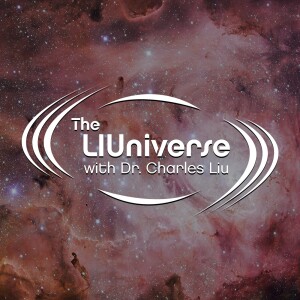
The LIUniverse with Dr. Charles Liu
Science:Astronomy

What can exoplanets teach us about our own solar system? Dr. Charles Liu explores the furthest reaches of our galaxy with the help of Vassar College astrophysicist Jackie Villadsen and co-host Allen Liu.
As always, our episode starts with the day’s cosmically cool thing: a weird and fun exoplanet system called K2-290 that’s exhibiting some crazy celestial mechanics. Find out what a K2 designation means, how the Kepler space telescope overcame a mechanical disaster, and why reaction wheels are really important! (Plus, we geek out a little bit about Star Wars and Tatooine!)
Our first student question, from Jean from New York City, “Is life possible on exoplanets?” kicks off a discussion of why we don’t know the answer yet. Jackie sums up the efforts of tens of thousands of scientists all around the globe involved in the search for life on extra-solar planets, including the different signals solar system scientists look for compared to extrasolar astronomers. You’ll hear how many exoplanets we’ve discovered already – get an update from “Future Allen” that you won’t want to miss!
Jackie shares her experiences using – and climbing all over – the Very Large Array radio telescope, the same ground-based telescope system that Jodie Foster was sitting in the movie Contact. You’ll learn about the birth of radio astronomy, coronagraphs, and why radio bursts from the sun are so intriguing. The trio talks about red dwarf stars and coronal mass ejections, including what they can tell us about our own solar system and why CMEs from our own sun could be responsible for the arid Mars we see now.
We also get to know more about Ruby Payne-Scott, the groundbreaking astronomer who, along with her colleagues, first found and categorized radio bursts from our sun in Australia after WWII. You’ll discover why she had to hide her marriage from the government in order to pursue her career. We also take one of our more interesting pop culture diversions so far, when Jackie tells us about her guilty pleasure: romance novels, including “The Ladies Guide to Celestial Mechanics” by Olivia Waite, set in the 1800s.
Finally, we grapple with a philosophical question from Walter T., one of our Patreon Patrons, that ponders existence and whether true nothingness could be possible. The answer takes us from the edge of the Big Bang to the implications of Einstein’s Theory of General Relativity and the ever-increasing space between galaxies.
We hope you enjoy this episode of The LIUniverse, and, if you do, please support us on Patreon.
Credits for Images Used in this Episode:
The Kepler satellite before launch – Credit: NASA, public domain
The Very Large Array – Credit: Wikipedia user Hajor, CC BY-SA 3.0
Total Solar Eclipse – Credit: Stephen Rahn, Public Domain
Ruby Payne-Scott – Credit: Peter Gavin Hall (Payne-Scott’s son), CC BY-SA 3.0
More Episodes
 2023-02-18
2023-02-18
 3.8k
3.8k
 2023-02-18
2023-02-18
 3.3k
3.3k
 2023-02-18
2023-02-18
 4.2k
4.2k
 2023-02-18
2023-02-18
 5.8k
5.8k
Create your
podcast in
minutes
- Full-featured podcast site
- Unlimited storage and bandwidth
- Comprehensive podcast stats
- Distribute to Apple Podcasts, Spotify, and more
- Make money with your podcast
It is Free
- Privacy Policy
- Cookie Policy
- Terms of Use
- Consent Preferences
- Copyright © 2015-2024 Podbean.com





